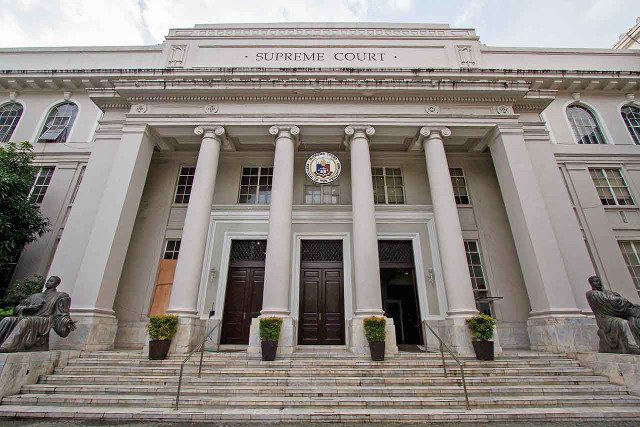SUMMARY
This is AI generated summarization, which may have errors. For context, always refer to the full article.

MANILA, Philippines – The Consultative Committee (Con-Com) studying revisions to the constitution is eyeing the creation of 3 high courts to replace the current system with a single, generalized Supreme Court.
The 3 courts will be the Federal Supreme Court, Federal Constitutional Court, and Federal Administrative Court, said Con-Com spokesman Conrado Generoso on Monday, May 21.
Each court will have areas of specialization and distinct areas of jurisdiction. These were laid out during the Monday press conference.
- Federal Supreme Court
- Exercises original jurisdiction over cases involving conflicts between branches and agencies witin the Federal Government, conflicts between the Federal Government and the Federated Regions, and conflicts between Federated Regions
- Cases involving ambassadors, other public ministers and consuls
- Petitions for certiorari, prohibition, quo warranto
- Reviews on appeal or certiorari: final judgments and orders of lower courts except those within the exclusive jurisdiction of the Federal Constitutional Court and Federal Administrative Court; issues of jurisdiction of any lower court; criminal offenses in which the penalty is life imprisonment or death
- Federal Constitutional Court
- Any matter involving pure questions of constitutionality
- To try cases of impeachment against all impeachable officials
- When sought by Congress, to provide advisory opinion on the constitutionality of crucial legislation
- When sought by other courts of general jurisdiction, rule on any constitutional issue that may arise during trial and affect outcome
- Federal Administrative Court
- Exclusive jurisdiction to review on appeal or certiorari the decisions, judgments, final orders or resolutions of quasi-judicial bodies
Creating 3 high courts is envisioned by the Con-Com to speed up the delivery of justice.
“We’re looking at making the sytem of justice more efficient. The trend in some parts of the world these days is not limiting the judiciary to one generalized high court but having specialized courts to address specific concerns and cases,” said Generoso.
Distributing power to appoint justices
All 3 courts will have 9 members each: a presiding justice and 8 associate justices.
The Con-Com also wants to change the process of appointing justices to make it less politicized. Instead of the president selecting from a short list prepared by the Judicial and Bar Council (JBC), the power to appoint justices will be shared by the president, judiciary, and Congress, said Con-Com chairman and former chief justice Reynato Puno.
The Con-Com wants the president, one of the high courts, and the Congress’ Commission on Appointments to appoint 3 justices for each the courts.
However, it will still be the president who will appoint the presiding justices for each court.
For the Federal Supreme Court, its 3 judiciary-appointed justices will be selected by the Constitutional Court en banc. For the Constitutional Courts, it will be the Administrative Court en banc. For the Administrative Courts, it will be the Supreme Court en banc.
Puno said that giving the Congress powers to appoint justices is a response to “criticism that justices are not elected by the people, that they are counter-majoritarian.” Justices appointed by Congress would serve as a “check” on other justices.
He downplayed concerns that Congress-appointed justices could easily be influenced by politicians responsible for their appointment.
“The general experience there [is], after your appointment to the High Court, you imbibe also the culture of independence,” said Puno.
Where is the JBC’s role in all this? The Con-Com is also considering revamping the JBC to turn it into a mere vetting body. This new JBC-like body will have a new name and new composition.
Puno said they are eyeing making the Ombudsman, Civil Service Commission chief, and Commission on Audit chief as ex-officio members of this body, given their mandate and expertise in evaluating the integrity and qualifications of government officials.
Another change being considered is barring the president’s appointees to the JBC-like body from reappointment.
“One weakness of our JBC, the appointees of the president can be reappointed. Those who want to be reappointed are, of course, influenced by outside powers,” said Puno. – Rappler.com
Add a comment
How does this make you feel?





There are no comments yet. Add your comment to start the conversation.